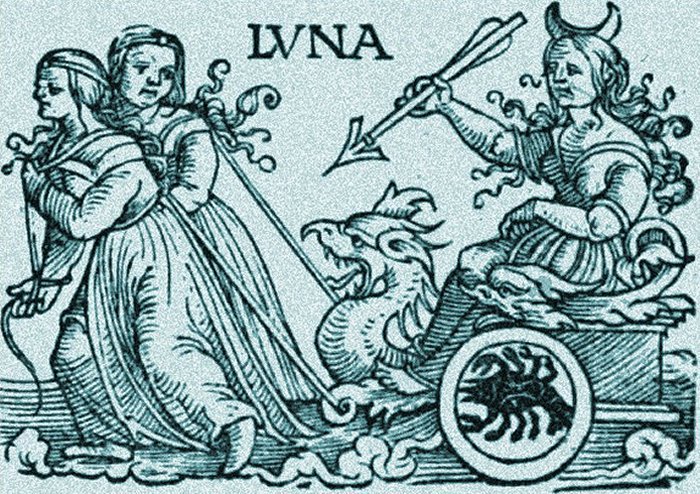Full Moon In Ancient Myths And Legends Of Our Ancestors
A. Sutherland - AncientPages.com - Full Moon is related to numerous ancient myths and legends and even paranormal tales.
Many different superstitions and beliefs influenced our ancestors who looked at the celestial ‘phenomenon’ – supermoon.
An ancient moon Goddess, the namesake for the Latin word luna meaning 'moon'. Her name also forms the root of the English words 'lunar' and 'lunatic'.
One of them says that when our Silver Globe is full and shines brightly, then we can expect the next day will beautiful weather. The occurrence of rainfall, on the other hand, was associated with a hazy moon surrounded by a white circle (‘halo’).
In earlier times, it was also believed that the red or transparent shield of the full moon was a harbinger of natural disasters, wars, and worst plague outbreaks. Also, the moon's effects date back to the legends and mythology of ancient civilizations. The full moon has been associated with strange or insane behavior, including sleepwalking, violence, and suicide.
In East Asia, it is seen as a rabbit pounding the ingredients for rice cake; in Chinese folklore, it is often portrayed as the rabbit companion of the Moon goddess Chang'e, constantly pounding the elixir of life for her.
In Aztec mythology, Tecciztecatl was a lunar deity, representing the old "man-in-the-moon". The 'Man in the Moon' refers to several images of a human face, head, or body that certain people in ancient times recognized in the disc of the full moon.
In some of the Aztec depictions, Tecciztecatl carried a large, white seashell on his back, representing the moon itself.
Talmudic tradition describes that the image of Jacob is engraved on the moon, and ancient Chinese tradition says a beautiful Chinese girl called Chango'e has been living there for 4,000 years. It is said she was banished to the moon because she stole the pill of immortality from her husband and consumed a double dose of it. She is accompanied by a small group of 'moon rabbits' that live on the Moon, an image that the human mind has perceived through the centuries, in the face of the Moon.
The story exists in many cultures, especially in East Asian folklore and Aztec mythology.
In East Asia, it is seen a rabbit pounding the ingredients for rice cake; in Chinese folklore, it is often portrayed as one of the rabbit companions of the Moon goddess Chang'e, constantly pounding the elixir of life for her. The Japanese also believed that the moon was a god with powers to foretell the future.
Left: A scribe writes at the feet of Thoth as a baboon with a lunar disk and crescent moon. Image via touregypt.net; Right: God Khonsu the Egyptian lunar god of fertility. His headdress consists of a crescent moon, topped by a full moon.
Algonquin (Algonquian) people had a myth of the medicine woman in the moon.; in fact, these Native American people have many different names for the ‘full moon’ through the year, which reflects on their strong connection with nature, hunting, fishing, and farming and the seasons they depended on.
An agricultural treatise dated to 15th century Spain states that in March, “melons, cucumbers, gourds, oats, sorghum, onions, and green beans can be sown in the waning moon.
Left: Prediction of fertility with the help of the Moon's phases; Right: Lunar god Chandra, Tibet
Cabbage seed and radishes in the old moon. Green beans and sorghum and spelled can be sown in the new moon. Graft fig trees and other trees in the waxing moon.”
S. S. Tomkins, in his book "In Affect Imagery Consciousness" writes that "the rays of Luna, goddess of the moon, have long been regarded as the cause of lunacy and cites Roger Bacon, who believed that "many have died from not protecting themselves from the rays of the moon..."
In the religion of ancient Egypt, the moon has played an important role, though it was only considered the nightly replacement of the sun because the Sun was the most important to them.
In depictions, the moon was commonly represented as a combination of the full-moon disk with the crescent moon.
Lunar gods were almost always shown with this symbol on their heads.
Khonsu was the Egyptian lunar god of fertility on his head he wore a crown or headdress consisting of a crescent moon, topped by a full moon. The moon god Khonsu, was described as the pendulum of heaven and precise divider of months.
Written by A. Sutherland - AncientPages.com Staff Writer
Copyright © AncientPages.com All rights reserved. This material may not be published, broadcast, rewritten or redistributed in whole or part without the express written permission of AncientPages.com
More From Ancient Pages
-
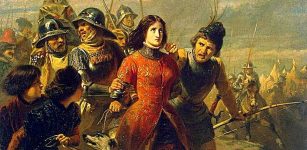 On This Day In History: Joan Of Arc Was Captured By The Burgundians – On May 23, 1430
News | May 23, 2016
On This Day In History: Joan Of Arc Was Captured By The Burgundians – On May 23, 1430
News | May 23, 2016 -
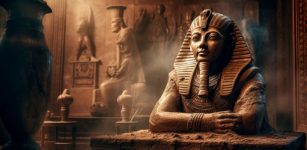 What Did A Day In Pharaoh’ s Life Look Like?
Ancient History Facts | Dec 9, 2019
What Did A Day In Pharaoh’ s Life Look Like?
Ancient History Facts | Dec 9, 2019 -
 New Giant Geoglyph Of Orca With Mysterious Symbols And A ‘Trophy Head’ Found In Nazca Lines
Archaeology | Nov 18, 2017
New Giant Geoglyph Of Orca With Mysterious Symbols And A ‘Trophy Head’ Found In Nazca Lines
Archaeology | Nov 18, 2017 -
 More Than 2,500 Years Old Gallic Tombs Unearthed In Nîmes, Southern France
Archaeology | Aug 17, 2020
More Than 2,500 Years Old Gallic Tombs Unearthed In Nîmes, Southern France
Archaeology | Aug 17, 2020 -
 Ancient DNA Reveals How European Skin, Eye, And Hair Color Evolved Over The Past 45,000 Years
DNA | Feb 24, 2025
Ancient DNA Reveals How European Skin, Eye, And Hair Color Evolved Over The Past 45,000 Years
DNA | Feb 24, 2025 -
 Unknown Biological Entities And Disturbing Weather Phenomenon In Washington Still Baffle Scientists
Featured Stories | Jul 23, 2019
Unknown Biological Entities And Disturbing Weather Phenomenon In Washington Still Baffle Scientists
Featured Stories | Jul 23, 2019 -
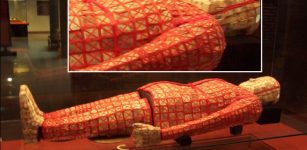 Precious Ancient Chinese Immortality Suits Made Of Jade
Artifacts | Aug 22, 2015
Precious Ancient Chinese Immortality Suits Made Of Jade
Artifacts | Aug 22, 2015 -
 Yama – Hindu God Who Rules Over The Dead And Souls And Guards Akashic Records
Featured Stories | Sep 17, 2018
Yama – Hindu God Who Rules Over The Dead And Souls And Guards Akashic Records
Featured Stories | Sep 17, 2018 -
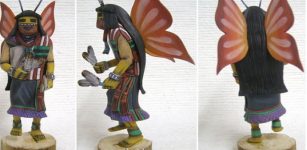 Butterfly: Powerful Ancient Symbol Of Beauty, Transformation, Hope, Rebirth And Happiness Featured In Myths And Legends
Ancient Symbols | Sep 26, 2019
Butterfly: Powerful Ancient Symbol Of Beauty, Transformation, Hope, Rebirth And Happiness Featured In Myths And Legends
Ancient Symbols | Sep 26, 2019 -
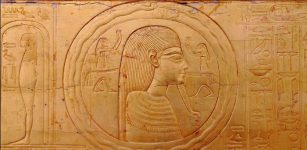 Ouroboros: Ancient Infinity Symbol Used By Different Ancient Civilizations
Ancient Symbols | Oct 3, 2017
Ouroboros: Ancient Infinity Symbol Used By Different Ancient Civilizations
Ancient Symbols | Oct 3, 2017 -
 On This Day In History: Munich Agreement Was Signed – On Sep 30, 1938
News | Sep 30, 2016
On This Day In History: Munich Agreement Was Signed – On Sep 30, 1938
News | Sep 30, 2016 -
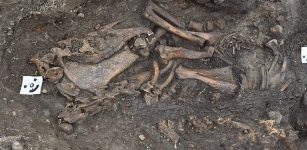 Two Rare Full-Sized Viking Burial Ships Uncovered In Sweden
Archaeology | Jul 5, 2019
Two Rare Full-Sized Viking Burial Ships Uncovered In Sweden
Archaeology | Jul 5, 2019 -
 Ancient Maya Built Sophisticated Water Filters To Obtain Drinking Water
Archaeology | Oct 23, 2020
Ancient Maya Built Sophisticated Water Filters To Obtain Drinking Water
Archaeology | Oct 23, 2020 -
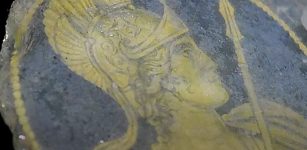 Extremely Rare Ancient Gold Glass With Goddess Roma Found During Subway Works In Rome
Archaeology | Feb 13, 2023
Extremely Rare Ancient Gold Glass With Goddess Roma Found During Subway Works In Rome
Archaeology | Feb 13, 2023 -
 Anne Neville – The Dramatical Story Of The White Queen
Featured Stories | May 22, 2020
Anne Neville – The Dramatical Story Of The White Queen
Featured Stories | May 22, 2020 -
 Controversial Hollow Earth Theory – Scientific Facts Presented By Researchers – Part 1
Ancient Mysteries | Jun 21, 2019
Controversial Hollow Earth Theory – Scientific Facts Presented By Researchers – Part 1
Ancient Mysteries | Jun 21, 2019 -
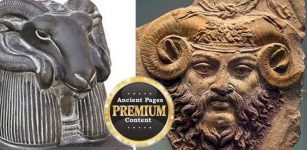 The Enigma Of People And Gods With Horns In Ancient Times
Ancient Mysteries | Nov 7, 2015
The Enigma Of People And Gods With Horns In Ancient Times
Ancient Mysteries | Nov 7, 2015 -
 Fascinating Altamura Man – One Of The Most Complete Neanderthal Skeletons Ever Discovered
Featured Stories | Jul 15, 2022
Fascinating Altamura Man – One Of The Most Complete Neanderthal Skeletons Ever Discovered
Featured Stories | Jul 15, 2022 -
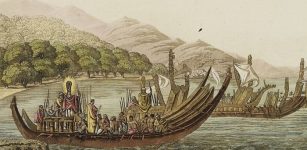 Stone Artifacts Reveal Long-Distance Voyaging Among Pacific Islands During The Last Millennium – New Study
Archaeology | Apr 21, 2023
Stone Artifacts Reveal Long-Distance Voyaging Among Pacific Islands During The Last Millennium – New Study
Archaeology | Apr 21, 2023 -
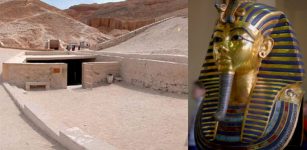 Radar Discovery Of Unknown Space Beyond Tutankhamun’s Burial Chamber May Lead To Queen Nefertiti’s Tomb
Archaeology | Feb 21, 2020
Radar Discovery Of Unknown Space Beyond Tutankhamun’s Burial Chamber May Lead To Queen Nefertiti’s Tomb
Archaeology | Feb 21, 2020

